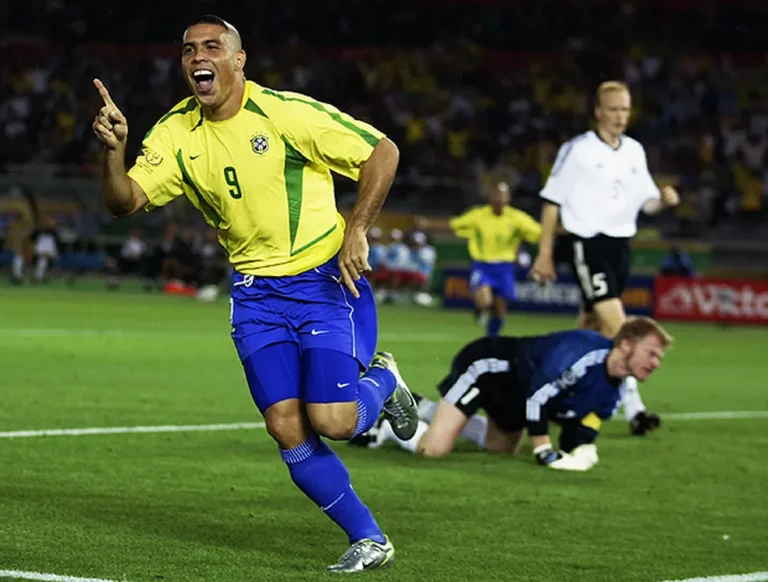World Cup 2026: Everything You Need to Know
The world Cup! This quadrennial event that manages to stop the planet, uniting nations through the world's most beloved sport: O soccer. Since the first edition in 1930 in Uruguay, the world Cup it has evolved, grown and captured the imagination of billions. And now, with anticipation growing every day, all eyes are turning to the 2026 World Cup.
This won't be just another tournament; It will be historic for several reasons. For the first time, the World Cup will be hosted by three nations — United States, Canada and Mexico. A football party that promises to be bigger than any previous event, with new formats, more teams and, without a doubt, more emotions.
In this article, we will take a deep dive into everything surrounding the 2026 World Cup. From choosing the host countries, to the cities that will vibrate with the games, to the significant changes in the format of the tournament that promise to revolutionize the competition as we know it. So, get ready for an in-depth journey that will give you a comprehensive insight into what to expect from the biggest football event in the world approaching.
Browse the content

Choosing Host Countries
When it was announced that the 2026 World Cup would be jointly hosted by the United States, Canada and Mexico, the news generated both excitement and curiosity. After all, this will be the first time that three different nations will share the responsibilities of hosting the biggest football event in the world. But why this choice? And what does this mean for the sport and the countries involved?
Strategic Decision
The choice to jointly host the 2026 World Cup by these three countries was not just a question of capacity or infrastructure, but also a strategic decision that reflects a new era in football. With 48 teams competing for the first time, the significant increase in the number of games requires a robust and diverse infrastructure, something that the combination of these three countries can offer with excellence.
Furthermore, the choice symbolizes an effort towards regional unification and cooperation in sport, establishing a precedent for future candidacies. It also reflects a movement in global football to make the sport more inclusive and accessible to diverse populations and cultures.
limpact on Host Countries
For the United States, Canada and Mexico, hosting the 2026 World Cup is a golden opportunity to boost tourism and the local economy. Host cities expect a significant increase in international tourist arrivals, which will bring investment in infrastructure, job creation and a sustainable economic boom. Furthermore, the event is a chance to unite local communities and strengthen the international profile of these countries as centers of excellence in sport.
The 2026 World Cup also provides a unique platform for the three countries to showcase their advances in technology, sustainability and hospitality to the world, reinforcing their commitments to innovation and sustainable development.
Now that we've explored the impacts and relevance of choosing host countries, let's delve deeper into the cities and stadiums that will be at the heart of the action at the 2026 World Cup. We'll detail which cities were chosen and what each of them offers in terms of facilities and experiences for fans and players.
The Selected Cities and Stadiums
The choice of cities and stadiums for the 2026 World Cup is crucial not only for the success of the tournament, but also for the experience of millions of fans who will watch the games live and on television. The United States, Canada and Mexico offer iconic locations that promise to make this event an unforgettable experience.
U.S
In the United States, several cities with state-of-the-art stadiums are on the list to host the games. For example, the MetLife Stadium in New York/New Jersey, known for its immense capacity and modern infrastructure, is one of the candidates to host the final. Other venues include SoFi Stadium in Los Angeles and AT&T Stadium in Dallas, both known for their high-tech and ability to accommodate large crowds.
Canada
In Canada, BMO Field in Toronto is slated to undergo significant expansions to bring it up to FIFA standards. Montreal and Vancouver are also preparing intensively, promising not only exciting games but also a vibrant cultural celebration that reflects the welcoming Canadian spirit.
Mexico
Mexico, with a rich football history, features the Estadio Azteca in Mexico City, one of the few stadiums in the world to have hosted two previous World Cup finals. This stadium, already sacred in the hearts of football fans, will be updated to offer even more comfort and cutting-edge technology for spectators.
Preparations and Innovations
In addition to renovations and construction, there is a substantial focus on sustainability and technology. Stadiums are being equipped with renewable energy systems, advanced waste management and high-tech infrastructure to ensure a safe and engaging experience for everyone. The inclusion of technologies such as Augmented Reality in guidance and interaction apps promises to revolutionize the way fans experience football.
These efforts demonstrate not only the host countries' commitment to the 2026 World Cup, but also a lasting legacy that will benefit cities and their populations long after the tournament is over.
Now, let's delve deeper into the next section, Qualification and Participating Teams, exploring how the expansion to 48 teams changes the dynamics of the tournament and which teams could surprise in this new format.
Qualification and Participating Teams
The 2026 World Cup brings a significant change that will alter the dynamics of the tournament: the increase in the number of teams from 32 to 48. This not only gives more nations the chance to participate, but also intensifies competition during the qualifying stages .
The New Qualification Format
To accommodate 48 teams, FIFA revamped the qualification process. Each confederation — UEFA (Europe), CONMEBOL (South America), CONCACAF (North, Central America and the Caribbean), CAF (Africa), AFC (Asia) and OFC (Oceania) — received an increased quota of places, guaranteeing a wider and more diverse representation in the tournament. This system encourages the development of football in regions that traditionally have less international visibility.
Teams to Watch
With expansion, expectations are high to see new faces in the tournament. Teams from emerging football nations, who once saw qualification as a distant dream, now have a real chance to compete on the world stage. Furthermore, traditional football powerhouses such as Brazil, Germany, Argentina, and Italy will continue to be favorites, but with the increase in the number of games and the addition of new teams, strategy and preparation will be more crucial than ever.
Challenges and Opportunities
This new format brings its challenges, especially in terms of logistics and game planning, but it also offers a unique opportunity for the world of football to expand its fan and player base. The inclusion of more teams promotes greater globalization of the sport, allowing more fans around the world the chance to see their countries compete in football's biggest arena.
With the qualification section and participating teams completed, the next topic to be covered will be the News and Changes to the Tournament Format, where we'll explore how the increase in the number of teams affects the tournament format and what new rules have been introduced to accommodate this growth.







